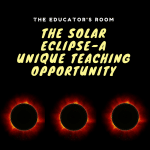Overview:
Using editorials can help students model their writing and in turn make them stronger writers.
As a high school English teacher, it was nothing for me to grade 120 five-paragraph essays every week. If it was a particularly rigorous unit, you find me wading through five to seven-page literary analysis in my Advanced Placement Literature class. If I was quick, I could have the papers graded within a two-week period. But no matter how many lessons, I taught on thesis statements, rebuttals, and citing evidence the “final” drafts were less than stellar. The truth was my students hated writing.
Students viewed writing as a chore and it was painful for them to do it on a consistent basis.
It wasn’t until about year three that I realized the difficulty of teaching secondary (6-12) students how to write is hard. I had to rethink how I thought about writing and how to teach it in a way students could consume.
Many students have missed the critical building blocks of the writing process and have resorted back to thinking they either a.) aren’t good at writing b.) or actively avoid writing anything and if they do they refuse to let anyone read it or c.) are naturally great writers who defy every “rule” but write great pieces with little or no instruction.
There really was not any in-between.
How a city’s past shaped our writing
So, imagine how frustrated I was as a third-year teacher trying to find a way to engage students to write. I didn’t have to look far because in 2004, the City of Memphis was embroiled in a fight with its past and it’s present. Throughout the city, there were embittered conversations about Confederate monuments that graced the city in largely all-black neighborhoods. Knowing America’s history, this wouldn’t seem far-fetched, but when you’re in the city (Memphis) where Dr. Martin Luther King, Jr. was murdered two blocks from my school- it was a big deal.
During that perfect storm, a local journalist was writing weekly editorials about hot-topic issues in the city/world, and I was a new teacher trying to figure out how to get my kids to use their voices to write. One Monday while signing in for work, I noticed a stack of Commercial Appeal newspapers and because I hadn’t finished my lesson plans, I grabbed them and figured I’d have the kids read in class while they did some peer conferencing.
Little did I know this would change the climate in my class around writing and advocating in local politics. The journalist had pinned an editorial about the infamous Nathan Bedford Forest monument that sat in front of my school and my students had no idea of the historical significance of the statue. We used our time to read the editorial, marked up the text with questions, facilitated small group conversations, and before they left that 90-minute they were working on drafting an editorial themselves on a topic around a confederate monument steps from their school.
Bringing this authentic text into my classroom helped me link writing with the world happening around them. On a classroom level, students were excited to read the weekly column and it gave them a map of how writing could help bring controversial topics to light. On an instructor level, bringing this text made me rely not only on seminal texts like my favorite, Their Eyes Were Watching God and Black Boy but to further diversify the texts students used in my class to model their own writing.
Changing teacher practice
On a deeper level, it also highlighted that students need to study writing if they are to become a writer. In the real world, writers don’t just answer prompts given to them. They write about what they are passionate about.
- If I want students to write an argumentative essay. They must study a variety of editorials.
- If I want students to write a narrative. They must study some of the most kick-ass short stories ever.
- If I want students to write informative pieces. They must study short research or reports that pique their interests.
This study of the craft of writing is one of the cornerstones of evidence-based writing (EBW). It’s what engages students in evaluating credible information to shape their own writing and view writing as a skill and not a task and it’s what helps them frame their own thoughts.
Exploring writing with evidence
To start helping teachers and students explore evidence as a mirror to their writing, there are three essential steps teachers need to try.
Source appropriate sources for your students and their grade level.
For my class, we stuck with opinion pieces, short narratives from magazines, and long-form editorials on topics that hooked my students to learn. For a while, I would bring old hip-hop magazines like The Source or Rolling Stones and would have students heavily annotate them as they built their toolbox on what writing could look like. We used graphic organizers to tease out what the writer was trying to convey, and many times spent time looking at the writing structurally. My students thrived from music, so it was important for me to find sources that helped me engage with what they already love.
Build in time for conversations about the writing.
Discussion helps build students’ confidence in their own writing. Kids can’t write if they do not talk. That’s the hard truth that many do not understand outside of the walls of the classroom. If you want to build them into writers, it’s important for them to have time to have conversations that aren’t over-monitored by teachers but instead are facilitated. Discussions should be used to explore ideas using sources to guide the work.
It will take students time to write.
Kids need practice for writing- there’s no other way to explain it. Becoming a strong writer comes from writing, receiving feedback, drafting, and conferencing constantly. I’ve said this numerous times, but evidence-based writing brings in a layer to simply drafting a paragraph. Students need time to read the text and integrate it into their writing in a way that makes sense. Students need sustained time to write, write, and write some more. Equally important is reminding students that writing is not about a grade but more about the trip. It was common practice for students to draft 3-4 times before being ready to hit the submit button. Evidence-based writing (EBW) if implemented correctly, can be a tool to engage students better and get them more confident in their writing.
Ultimately, my number of papers was not reduced by implementing a writing system based on evidence, but I was able to bring more engagement to my students and excitement for me as their teacher. So for any teacher reading this and thinking, “this will be hard for my students!” I urge you to take a small step and introduce a text that engages your students and use that to change the difficulty that comes with teaching writing.







“…students need to study writing if they are to become writers.” Such an important point, Franchesca! And true for any age of writer. I taught young children and we would analyze favorite books to understand the difference between narrative, opinion, and information writing. We even got into the details of persuasive and memoir writing. Understanding how authors construct purposeful, beautiful, effective text allows students the confidence to try it on their own. Thanks for sharing your journey with your students with us!